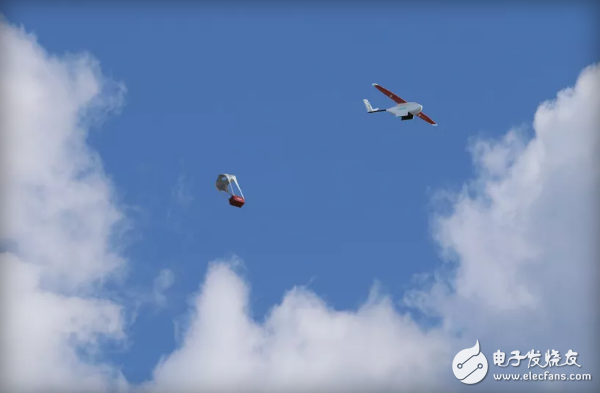Recently, Rwanda officially launched the country's first drone delivery project.
Today, fresh blood and plasma will be able to be transported by drone to remote rural clinics in western Rwanda, where road infrastructure is extremely backward, often resulting in delays in the urgently needed supply of medicines for hours or even days.
With the launch of drones, the Rwandan government will reduce the time it takes to deliver drugs to these remote areas to a few minutes.

Of course, from the current situation, these projects are still planned, but they may be implemented soon. The project will be piloted by Zipline, a start-up company for drones in California. Zipline is working with the UPS Foundation and Gavi, a vaccine fund funded by Bill Gates, to promote this drone delivery project in Rwanda. Of course, the Rwandan government will pay for this service, but these costs are comparable to the cost of transporting plasma from motorcycles that the Rwandan government still relies on so far. Zipline itself is a private company, and Microsoft co-founder Paul Allen and Yahoo founder Yang Zhiyuan are all investors in the company.
Once the above-mentioned projects promoted by Zipline are fully implemented in a few weeks, the Rwandan government plans to fly 50 to 150 drones to 21 clinics in remote areas daily to transport blood and plasma to these remote areas. Currently, postpartum hemorrhage is the leading cause of death for a large number of newborn mothers in Rwanda, but clinics in remote areas do not have the resources to protect plasma. It is well known that protecting plasma requires reliable storage facilities and is preserved at specific temperatures. In addition, once the long rainy season comes, the road transport situation in Rwanda will be even worse.
According to the project plan, if the medical staff needs to obtain plasma, they can send a text message of demand, so that after about 30 minutes, the drone can send the plasma to the designated location. The Zipline drone will not land directly at the medical center, but will drop the plasma wrap to the receiving area of ​​the clinic through a one-time parachute. During the flight, the drone does not land, or even the people who are not close to receiving the goods will make the drone fly more safely over the area. These drones only land at a designated take-off center. In Rwanda, the take-off centre for drones is located in the Muhanga area in the central part of the country.
Zipline's drones fly at about 40 miles per hour and have a cruising range of about 90 miles per charge.
UPS helped produce the Zipline drone and provided drones to Rwanda. The UPS Fund contributed $1.1 million to the project, but in addition to these support measures, UPS did not participate too much in matters related to the above projects. However, UPS's global delivery experience will help expand the drone delivery program to more countries and regions in the future.
UPS has a good reason and ability to work with humanitarian drone delivery projects. As we all know, Amazon is now expanding its own drone delivery project, and UPS also needs to actively participate in drone delivery.
Just last month, UPS just successfully completed a flight test mission for UAV medical equipment, which was to deliver medical equipment to the islands of the Massachusetts coast, but UPS is currently delivering these in drone delivery. Compared with Amazon, it is still insignificant. At present, Amazon has conducted a large number of drone delivery flight tests in places such as Canada and the United Kingdom.
However, the situation of UPS needs to be another matter. Be aware that UPS has a large number of drivers who are not optimistic about the future of drones replacing them. However, if UPS does not take a more serious approach to the drone delivery project, then as the world's largest delivery company, UPS will soon find itself in a slump.
Zipline has negotiated with US policymakers to obtain flight immunity from drones so that drones can fly in high altitudes that are invisible to the human eye, transporting medical equipment or drugs to remote areas and the United States at critical times. Indigenous living area. Last year, another drone company, Flirtey, completed a mission approved by the US Airways Administration to deliver medicines to rural Virginia.
Gel Storage Battery,Solar Gel Battery,Ups Gel Battery,Solar System Gel Storage Battery
MAIN NEW ENERGY CO.,LTD , https://www.greensaver-battery.com